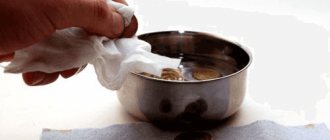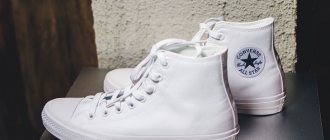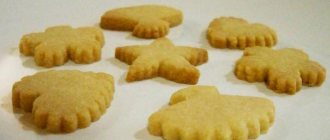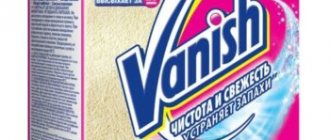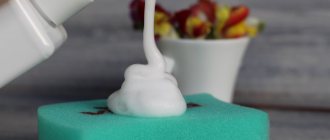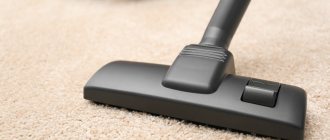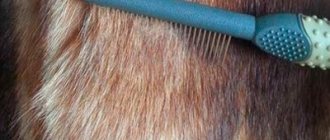Using soap
Cleaning copper and nickel coins at home is quite possible. For each method, follow some rules:
- The products must be cleaned before the procedure.
- During this process, do not allow your skin or body parts to come into direct contact with caustic substances.
- At the end of the procedure, wash the coins with soap and hot water.
How to clean USSR copper-nickel coins?
The simplest method involves the use of soap, which is mandatory in every home. It is not difficult to dilute the soap solution; the products are dipped into it. The alkaline environment destroys the oxide on the surface, then it is removed with a stiff brush under running hot water.
The disadvantage of this method is the low efficiency of the solution. Achieving the desired result may take a long time.
General information
Year of issue and material from which Soviet coins are made
In 1991, new coins began to be issued in denominations of 10, 5 and 1 ruble, as well as 50 and 10 kopecks. The difference was that they were made from other metals. Let's try to understand this in more detail.
Coins from 1961
To make some coins (1, 2, 3, 5 kopecks), metal from a copper-zinc alloy was used. For the rest (10, 50 kopecks, 1 ruble, nickel was used.
Coins from 1991
Money in denominations of 10, 50 kopecks, 1, 5, 10 rubles were made from alloys (steel and brass, copper-nickel alloy). Rubles were made from compounds of copper-nickel and copper-zinc alloys.
Electrolysis is not for everyone
Another method of cleaning USSR copper-nickel coins will require a power source, which could even be a phone charger. The coin must be attached to the cathode (negative), the source must output up to 12 watts. A solution with salt (one tablespoon) or soda (two tablespoons) is added, into which the part is lowered. The current is applied from several minutes to an hour, depending on the desired result and the degree of oxidation of the product.
It is important to know that this method should not be used on coins that have noticeable surface damage. The result is accompanied not only by getting rid of oxide, but also by the manifestation of all cavities and flaws.
Cleaning Nickel Coins by Electrolysis
For copper-nickel coins, when cleaning them by electrolysis, there is one special limitation: if you use graphite or stainless steel as the anode (“+”), then the surface of the coin will be well cleaned of oxides, but due to the presence of copper in the coin’s composition, it will acquire a characteristic copper tint. To eliminate this drawback, you can either use a nickel anode or carry out cleaning in two stages: the first is cleaning with a conventional anode and the second is covering the coin with a layer of nickel (the same cleaning but with a nickel anode).
This cleaning method is not universal and the only one. On the contrary, while showing good results for coins with weak damage to the coin field, for heavily oxidized coins electrolysis opens up all cavities and other defects.
| These 20 kopecks from 1945 were heavily coated with copper and nickel oxides. As a result of cleaning by electrolysis, all oxides were removed, but deep cavities were opened. In addition, the color of the coin remained dark. |
With vinegar and salt
Simple cleaning with vinegar damages the coin, creating flaws on the surface, without completely ridding the item of oxide. If you add a seven percent solution of vinegar and a teaspoon of salt to fifty grams, the result of the procedure will improve. The salt should not be stirred until completely dissolved: it is important to leave a small layer at the bottom. They place a coin on it and turn it over every few minutes. The procedure usually takes up to twenty minutes. After cleaning, however, a pinkish tint may remain on the coin.
What kind of coins are these?
An alloy of copper and nickel or cupronickel was used for minting banknotes in the USSR in the short period of 1931-1935. It was small things in the middle segment - 10, 15, 20 kopecks. Minting was carried out in the northern capital to replace silver change money. This metal was valued for its high wear resistance; at first it had a brilliant white color, similar to silver.
But the appearance of such coins quickly changed, they acquired a characteristic reddish coating due to copper, gradually darkened and eventually became almost brown. It is in this form that treasure hunters most often find them, and even at home, Soviet small items from the 1930s that have been lying around for a long time look far from exemplary. And since these coins are of certain interest to collectors, the issue of cleaning them remains relevant.
This is interesting. The copper-nickel alloy with the more noble name cupronickel came into coinage from cooking. During the Soviet period, in many homes one could see cutlery, salt shakers and other household kitchen items made of cupronickel. And, by the way, every housewife knew how to clean them.
Trilon-B for uniform oxidation
Trilon-B is a strong cleaning agent. In some cases, the product will damage the material, but with copper-nickel coins there is nothing to worry about. It is best to choose this cleaning method for cases of uniform oxidation coverage.
The substance can be dissolved in water in a ratio of one to ten. The solution effectively cleans the coin: the duration of the procedure depends on the degree of contamination and the desired result. After cleaning, wash the coin with soap and hot water.
What not to do
Before we talk about how to clean copper-nickel coins, it is worth talking about how not to do this, that is, about methods that are useless or unsafe. First of all, you don’t even have to try using such a popular method of cleaning other coin metals as soapy water. In this case we are talking about oxides, which no soap can remove. Vinegar should be mentioned next, since they really manage to dissolve the oxides of this alloy.
But the downside of such a procedure can be very sad; the image of the coin may lose its clarity. And the alloy itself, under the influence of vinegar, tends to acquire a strange, uncharacteristic pinkish color, which in no way increases the value of the coin, and moreover, can render it unsuitable from a collectible point of view.
GOI paste
The method significantly damages the surface of the products, like any cleaning with abrasives. If the coins are rare and are being cleaned for sale, cleaning with GOI paste is excluded: polishing removes a thin layer of the surface, erases small details and the products lose their value.
GOI paste is usually applied to a soft rag, sometimes moistened with gasoline. Before you start polishing, you need to wipe a layer of paste on an unnecessary surface or object so that large pieces disperse and do not scratch the part.
In general, there are plenty of ways to clean nickel coins at home. Depending on the degree of contamination, you can choose the appropriate one.
Vinegar-salt method to clean coins
The best cleaning compounds, of course, are the ones at home that you can find at home. Most folk remedies (for example, soap solution, citric acid) do not contain abrasive substances, so they do not have such a strong effect on the surface of the metal and do not damage it.
However, you can also use universal chemical preparations that can effectively deal with any type of contamination on a coin (for example, Asidol-M, Tech-45, Leuchttrum, Shine Coins, Silbo, Lan 7). Instructions for use, as well as on which surfaces a particular composition can be applied, are indicated on the packaging.
For silver
Silver coins need to be cleaned based on the assay grade and the degree of surface contamination. Instances made of high-grade metal can be cleaned with soda (30 g of substance is required per 100 ml of water) or ammonia solution (9 parts of water and 1 part of alcohol are required). The silver coin is simply placed in one of the solutions for a while until it becomes clear.
If there is little oxidation on high purity silver banknotes, the surface can be cleaned with a mixture of baking soda, alcohol and toothpaste. The composition should be thick and should not contain any abrasive. Apply the product to the surface and rub with either a brush or your fingers.
Low-grade silver coins can be cleaned with a composition such as Trilon B. The product is mixed with water in a ratio of 1:10. Afterwards, the product is dipped into the prepared solution. When the patina disappears from the banknote, the coin can be rinsed with water.
For copper
Often the surface of copper specimens is covered with a patina. However, if there are no significant traces of rust, but just a film present, then it is better not to clean the copper metal disk. Patina protects the coin from rust, giving the coin a noble appearance.
If the coin is still susceptible to corrosion, it is necessary to use aggressive substances (for example, Trilon B, citric and acetic acid). They will remove the deformed layer without affecting the integrity of the image.
Weakly oxidized specimens can be soaked in the solution for several hours, while heavily contaminated specimens can be left for a day.
To prepare a solution with citric acid, you will need to dilute the powder with water in a ratio of 1:3, respectively. To make a vinegar solution, mix a couple of tablespoons of vinegar in a liter of water.
For bronze
To restore the shine to the bronze surface, just lubricate the coin with toothpaste and then wash it in warm water.
After washing, the banknote must be dried. To do this, the specimen is wrapped in fabric folded in several layers or in a paper napkin.
For gold
There is no need to subject gold coins to aggressive cleaning. If there are any stains, they can be washed in a warm soapy solution, then rinsed and dried.
Gold coins do not need to be rubbed heavily with a cloth, as the cloth may leave scratches on the surface.
For bimetal
The most effective means for cleaning bimetal banknotes are:
- Soap solution. Mix 30 ml of liquid dish soap in a liter of warm water. Place the coin in the composition for an hour. Then wipe the product with a dry, clean cloth.
- 10% ammonia solution. Pour the substance into a container and place a coin in it. Wait exactly 10 seconds, and then you can take out the specimen with tweezers and wipe it dry.
To clean proof quality coins, you can use ammonia. To do this, you need to hold on to the rim of the disc, using light movements to remove dirt from the surface. Alcohol can be applied with a cotton swab. After the procedure, the coin must be washed and dried.
It is not difficult to clean a coin, including a dug one, from dirt at home. The main thing is to know exactly whether a given product is suitable for a particular type of metal or not, so as not to spoil the specimen. If you are not sure, you can take the coin to an experienced specialist for cleaning.
How to get rid of it: instructions for use
To remove rust from a metal surface using a battery, you will need the following materials:
- orthophosphoric acid - it is this that forms the basis of all rust converters; you can purchase it in radio stores or on the Internet;
- salt finger battery - for processing you will need 2 or 3 pieces;
- cotton pads;
- copper wire with crocodile grips, wire cross-section – 1.5-2.5 m2;
- solvent - it will be used to degrease the surface;
- electrical tape or rubber bands, which are used for wrapping paper bills;
- alkaline solution - to prepare it, baking soda in the amount of 2 tablespoons is diluted in a glass of water.
In order for the rust removal procedure to be as successful and quick as possible, one battery must be opened, cut into several pieces with a knife and soaked in phosphoric acid for 12 hours.
The container must be glass. The zinc will dissolve, thanks to which it will be possible to obtain a high-quality composition for galvanization.
It is necessary to peel off the protective film from the battery and wrap it tightly with bare wire (about 10 cm). This contact is secured with electrical tape. The bottom of the battery is wrapped with a cotton pad and secured in the same way. After this, you can proceed to the process of getting rid of rust.
Procedure:
- Remove rust mechanically using a brush.
- Treat the surface with a solvent.
- They turn off the “+” on the battery, and leave the “-” on, which creates a negative charge on the body.
- Apply phosphoric acid to the affected area.
- Connect the alligator clip to the positive side of the battery.
- Dip the side covered with a cotton pad into the acid and press it against the rust. Positively charged zinc ions will transfer to the metal surface and form a kind of barrier. Cotton pads must be replaced with new ones, as they will deteriorate during operation. You need to repeat the procedure several times. The fact that galvanization was successful will be indicated by lightening of the treated area.
After completing the procedure, the surface is washed with soda solution to completely neutralize the acid. The cleaned metal is treated with a solvent and primed. Thanks to the galvanization procedure, rust will not appear on the surface for a long time.
How to return noble patina to copper
Many methods of cleaning coins, along with oxides and dirt, also remove the natural patina, which is so highly valued by numismatists. In order to artificially recreate it, you will need sulfur ointment. It can be purchased at a pharmacy.
The left side has patina, the right side is cleared of it.
Sequencing:
- pour warm water into a small basin or bowl;
- put on rubber gloves;
- apply and rub sulfur ointment into the coin, this should be done with your hands under water;
- try to distribute the ointment evenly over the product;
- as soon as the metal begins to darken, the product must be removed and wiped with a paper towel;
- leave the coin for two days to consolidate the effect;
- After that, lubricate with Vaseline and polish with a felt cloth.
The desired effect is achieved in several doses, with an interval of two months. It should be remembered that artificial patina is easily washed off with a product containing acid.
